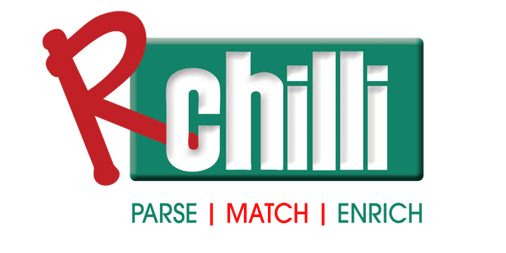Description

Candidate.ID

RChilli
Comprehensive Overview: Candidate.ID vs RChilli
Candidate.ID and RChilli are two distinct platforms that cater to the recruitment and HR industry, each offering unique tools and functionalities to streamline various aspects of talent acquisition and management.
a) Primary Functions and Target Markets
Candidate.ID:
-
Primary Functions: Candidate.ID is a talent pipeline automation platform that primarily focuses on recruitment marketing and candidate engagement. Its core features include lead scoring, candidate nurturing through personalized content, and automated candidate communication. The platform helps recruiters identify and engage with passive candidates by tracking their interactions with branded content.
-
Target Markets: Candidate.ID primarily targets recruitment agencies and corporate HR departments that require effective sourcing and engagement tools to build strong talent pipelines. It is particularly useful for organizations looking to improve their recruitment marketing strategy and enhance candidate experience.
RChilli:
-
Primary Functions: RChilli specializes in resume parsing, data migration, and taxonomy tools. Its platform provides automated parsing solutions that extract and process information from resumes and job applications, enabling seamless integration with Applicant Tracking Systems (ATS) and other HR software. RChilli also offers taxonomy solutions to support job matching and skill extraction.
-
Target Markets: RChilli's primary customers include HR software vendors, recruitment agencies, corporate HR teams, and educational institutions. Organizations that need efficient resume data extraction and integration capabilities are the main users of RChilli's services.
b) Market Share and User Base Comparison
-
Candidate.ID: Being a specialized tool in talent pipeline automation, Candidate.ID appeals to larger enterprises and sophisticated recruitment agencies looking to fine-tune their engagement strategies. While exact market share figures can vary, Candidate.ID is generally considered to be a niche product in the broad recruitment technology market, with a focused user base among those prioritizing engagement and nurture strategies.
-
RChilli: As a well-established player in the resume parsing domain, RChilli tends to have a larger market share compared to niche platforms like Candidate.ID, especially since its solutions are integrated into a vast array of HR technologies worldwide. RChilli's user base includes numerous HR software providers who incorporate its parsing technology into their own offerings.
c) Key Differentiating Factors
-
Functionality Focus: Candidate.ID is distinct in its focus on candidate engagement and nurturing within the recruitment marketing sphere, a feature that sets it apart from traditional applicant tracking or automated parsing systems like RChilli.
-
Technology and Integration: RChilli's technology is centered around parsing and taxonomy, providing critical data processing capabilities that complement ATS and recruitment software. Its integration capabilities place it as an essential backend tool for data extraction tasks, unlike Candidate.ID’s focus on front-end candidate interaction.
-
Market Segment: Candidate.ID specializes in mid to large-scale enterprises looking to improve passive candidate engagement, whereas RChilli serves a broader range of markets including technology vendors and institutions needing robust data processing capabilities.
-
Use Case and Application: Candidate.ID is ideal for hiring teams focused on building long-term relationships with candidates through engagement and content marketing, whereas RChilli provides immediate value in the automation of resume data entry and management, benefiting HR systems and recruitment software needing enriched candidate data.
In summary, while both Candidate.ID and RChilli cater to the recruitment and HR industry, their functionalities, target markets, and differentiation lay in different aspects of the recruitment process, with Candidate.ID focusing on engagement and RChilli on data processing and integration.
Contact Info

Year founded :
Not Available
Not Available
Not Available
Not Available
Not Available

Year founded :
Not Available
Not Available
Not Available
Not Available
Not Available
Feature Similarity Breakdown: Candidate.ID, RChilli
Candidate.ID and RChilli are both tools used in the recruitment and HR space to streamline processes related to candidate management and resume parsing. Here’s a breakdown of their feature similarities and differences:
a) Core Features in Common
-
Candidate Management:
- Both platforms likely offer features to manage candidate data, although the exact functionalities may vary. This typically includes storing, segmenting, and tracking candidate information.
-
Data Integration:
- Integration capabilities with other HR and recruitment tools are fundamental to both platforms. They likely support integrations with applicant tracking systems (ATS) and other HR software.
-
Reporting and Analytics:
- Both systems are expected to provide some level of reporting and analytics to track recruiting metrics and improve hiring processes.
-
Automation:
- Automation features, such as automated data entry and parsing, are common in both tools to enhance efficiency and reduce manual work.
b) User Interface Comparison
-
Candidate.ID:
- Candidate.ID is known for providing a user-friendly interface designed to support talent pipelines and candidate nurturing. Its interface is likely built to emphasize easy navigation and intuitiveness to facilitate nurturing campaigns via email or other communication channels.
-
RChilli:
- RChilli may feature a more technical interface focused on the backend processes of resume parsing and data extraction. Its user interface is likely streamlined to integrate deeply with other applications and provide clear outputs from parsed resumes.
Both platforms aim for ease of use but might cater to slightly different aspects of the recruitment process, which is reflected in their interface designs.
c) Unique Features
-
Candidate.ID:
- Talent Pipeline Automation: Candidate.ID might set itself apart with a unique focus on talent pipeline automation, allowing recruiters to categorize and nurture candidates based on their level of engagement or readiness.
- Campaign Management: It likely allows for detailed campaign management, enabling recruiters to tailor communications and outreach effectively.
-
RChilli:
- Advanced Parsing Technology: RChilli is known for its advanced parsing technology, which includes resume parsing, job parsing, and social data retrieval. This feature is critical for extracting and organizing data at a granular level.
- Multilingual Support: RChilli might offer extensive support for parsing resumes in multiple languages, making it a strong choice for companies recruiting globally.
In summary, while both Candidate.ID and RChilli focus on streamlining aspects of the recruitment process, they have different areas of emphasis, which is reflected in their features and interfaces. Candidate.ID is likely centered around candidate engagement and nurturing, while RChilli focuses on robust data parsing and integration capabilities.
Features

Intelligent Talent Nurturing
Insightful Reporting
Candidate Engagement
Efficient Pipeline Management
Candidate Scoring and Analytics
Integration Capabilities
Talent Pool Management

Job Matching
Recruitment Analytics
Data Integration
Resume Parsing
Best Fit Use Cases: Candidate.ID, RChilli
Candidate.ID:
a) Best Fit Use Cases:
- Large Enterprises with Complex Talent Needs: Candidate.ID excels in environments that require robust talent engagement and management solutions. This includes large enterprises with numerous departments and diverse hiring needs.
- Companies with High Volume Hiring: Organizations that frequently hire and manage a high volume of candidates would benefit from Candidate.ID’s capabilities in automating and streamlining candidate engagement.
- Recruitment Marketing Focused Businesses: Businesses that emphasize recruitment marketing to attract passive candidates can leverage Candidate.ID’s tools for nurturing and engaging talent over time.
b) RChilli:
b) Preferred Use Cases for RChilli:
- Organizations with Extensive Resume Processing Needs: RChilli is ideal for businesses needing to parse, analyze, and manage large numbers of resumes efficiently, such as recruitment agencies and staffing firms.
- ATS and HR Tech Providers Seeking Parsing Integration: Companies developing Applicant Tracking Systems (ATS) or other HR technologies can integrate RChilli’s resume parsing capabilities to enhance their offerings.
- Businesses Looking for Structured Data Management: Enterprises that require structured data for candidate management and want to automate the categorization and storage of candidate information can find RChilli useful.
d) Industry Verticals and Company Sizes:
-
Candidate.ID:
- Industry Verticals: Candidate.ID tends to be appealing to sectors like technology, healthcare, manufacturing, and any verticals where targeted recruitment marketing and engaging passive candidates are crucial.
- Company Sizes: Primarily suited for large to mid-sized companies due to its sophisticated engagement and tracking features. It may also be beneficial for smaller companies with significant growth plans and long-term strategic recruitment goals.
-
RChilli:
- Industry Verticals: RChilli caters to industries with heavy recruitment demands such as IT, healthcare, finance, and staffing services. It's particularly useful where rapid screening and sorting of resumes are critical.
- Company Sizes: It serves a broad range of company sizes, from small businesses to large enterprises, especially those that prioritize efficient resume handling and data extraction to optimize recruitment processes.
Both tools are designed to enhance recruitment efficiency but cater to slightly different aspects of the hiring process, with Candidate.ID focusing more on engagement and pipeline development, and RChilli emphasizing data handling and processing.
Pricing

Pricing Not Available

Pricing Not Available
Metrics History
Metrics History
Comparing undefined across companies
Conclusion & Final Verdict: Candidate.ID vs RChilli
To provide a comprehensive conclusion and final verdict between Candidate.ID and RChilli, it's essential to evaluate both products based on their offerings, costs, user reviews, and specific needs they address. Although I don’t have real-time data, I can give you a structured approach based on general knowledge up to 2023.
a) Considering all factors, which product offers the best overall value?
Best Overall Value:
-
Candidate.ID is known for its emphasis on candidate engagement and nurturing. It could be considered the better choice if the goal is to maintain a strong relationship with potential candidates and improve the candidate experience.
-
RChilli, on the other hand, offers robust resume parsing and data management. Its strong suit is in automating the screening process, freeing up recruiters to focus on more value-added tasks.
Verdict:
If your primary goal is to streamline and automate the data management and initial screening processes, RChilli offers the best value. If your focus is on long-term candidate relationship management and engagement, particularly for talent pipelining, Candidate.ID is more suitable.
b) Pros and Cons of Choosing Each Product
Candidate.ID
- Pros:
- Strong capabilities in candidate relationship management and nurturing.
- Facilitates better engagement through personalized content targeting.
- Useful analytics and insights on candidate readiness and interaction.
- Cons:
- Might not be as effective if the immediate goal is fast processing and filtering of large candidate volumes.
- Could require more time to show ROI due to its focus on long-term relationship building.
- May have a steeper learning curve for recruiters accustomed to traditional ATS tools.
RChilli
-
Pros:
- Excellent for resume parsing and database management.
- Saves time and reduces human error in candidate screening.
- Easily integrates with multiple Applicant Tracking Systems (ATS).
-
Cons:
- Primarily focused on automation; less on engagement and nurturing.
- Might not offer in-depth engagement tools.
- Potentially limited in personalizing candidate interactions beyond the initial screening phase.
c) Specific Recommendations for Decision-Makers
-
Assess Your Needs:
- If your company needs a strong focus on candidate pipeline nurturing and you prioritize long-term engagement, lean towards Candidate.ID.
- For those struggling with high volumes of applications and needing quick, automated processing, RChilli could be more beneficial.
-
Evaluate Integration:
- Ensure seamless integration with existing HR systems. Both tools offer integration options, but the specific needs and current tools of your organization could sway this decision.
-
Consider Scalability:
- Choose based on your company's current size and growth plans. A fast-growing company might benefit more from RChilli’s automation and scaling capabilities.
-
Pilot Each Solution:
- If possible, conduct a trial or pilot of each solution to see which resonates best with your team’s workflow and objectives.
Final Verdict: Ultimately, the decision between Candidate.ID and RChilli should be based on your organization's specific needs, whether those are geared more towards automation and efficiency with RChilli or long-term engagement and nurturing with Candidate.ID. Both products have strong suits but serve different primary functions.
Add to compare
Add similar companies



